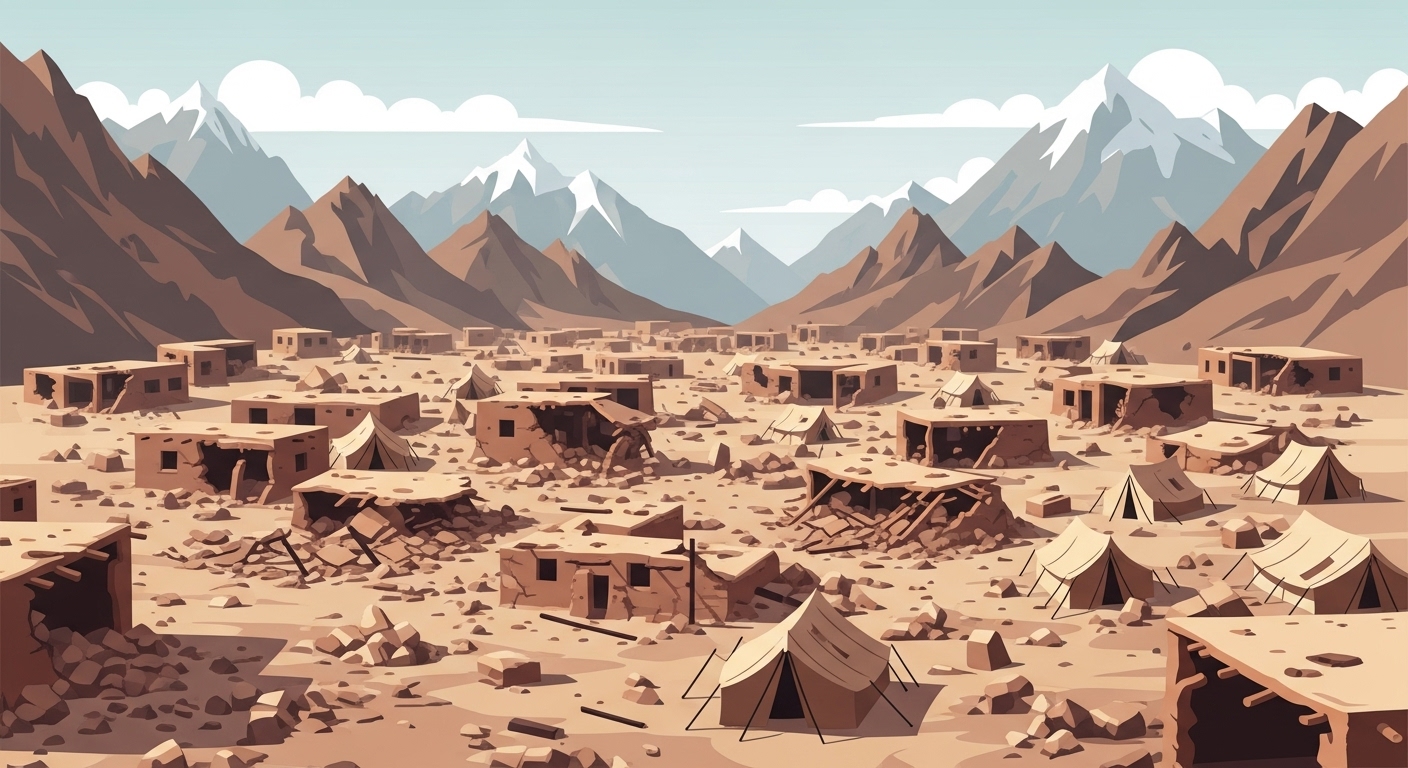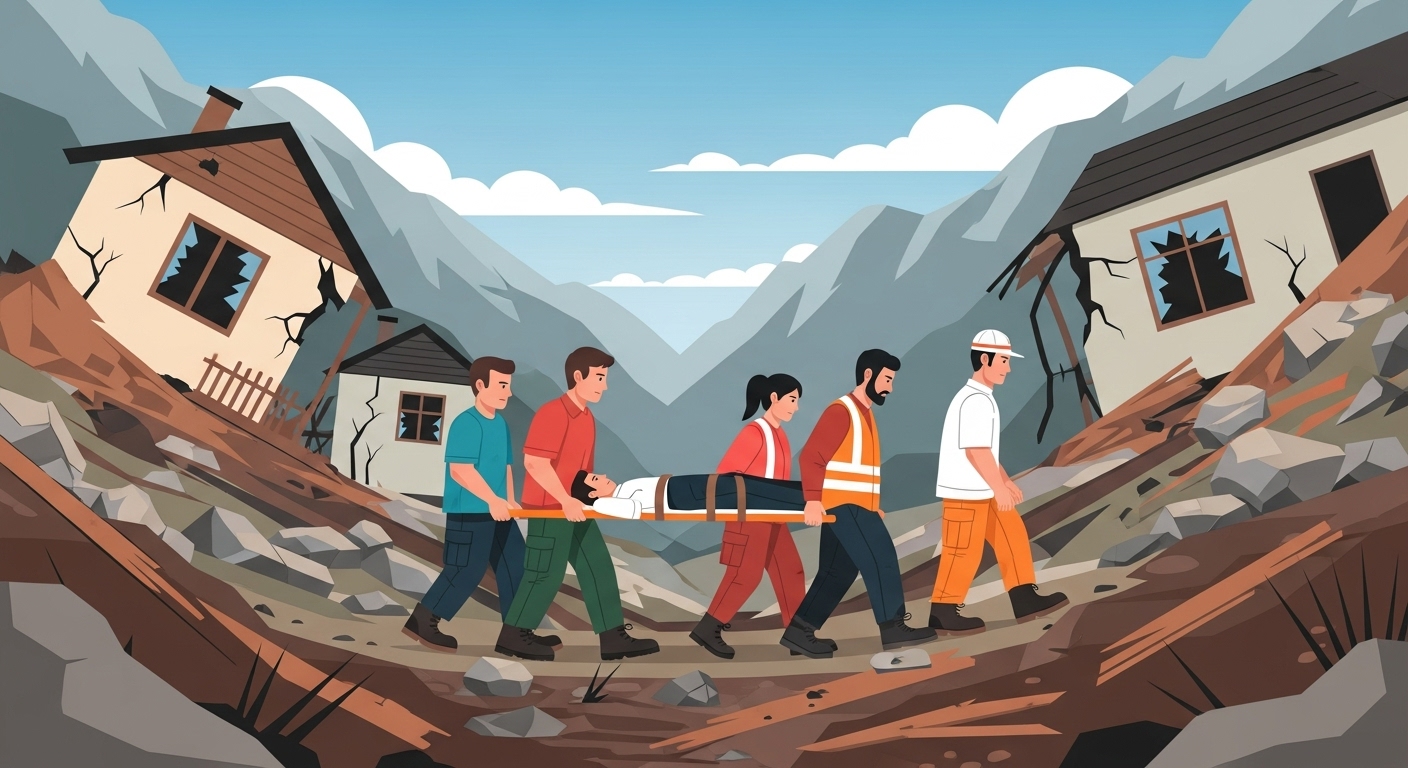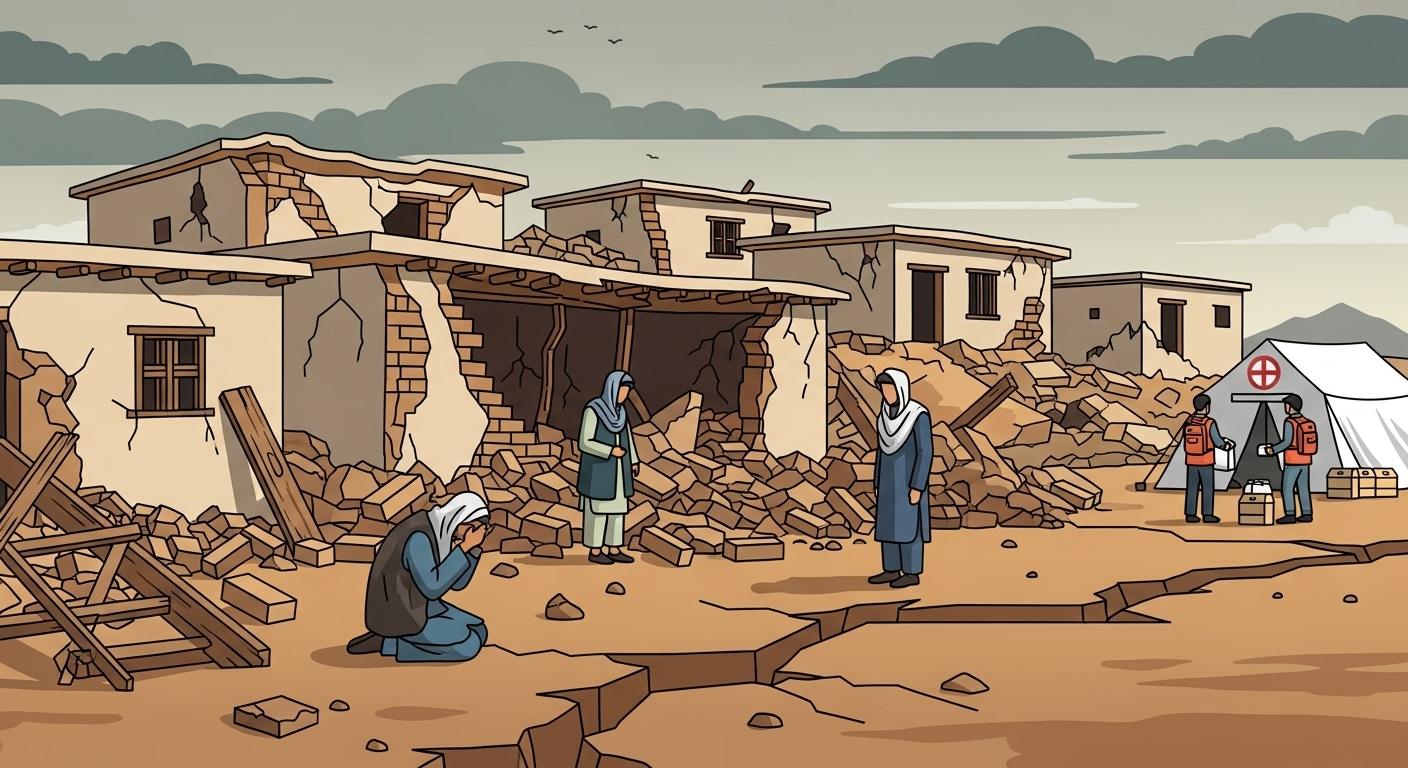Afghanistan, a nation frequently tested by natural disasters, is once again grappling with immense tragedy. A powerful magnitude 6.0 earthquake struck the eastern provinces in the late hours of Sunday, August 31, 2025, unleashing overwhelming destruction and claiming a rapidly rising number of lives. This latest tremor has exacerbated an already dire humanitarian situation, leaving communities shattered and aid agencies racing against time to reach those most in need. The unfolding crisis underscores the profound vulnerability of a country already reeling from decades of conflict and economic hardship.
Key Takeaways
- A magnitude 6.0 earthquake struck eastern Afghanistan on August 31, 2025, primarily affecting Kunar, Nangarhar, and Laghman provinces.
- The death toll has tragically surpassed 1,400, with over 3,100 injured, as of September 2, 2025, and these figures are expected to rise.
- More than 5,000 homes have been destroyed, flattening entire villages and displacing thousands.
- The disaster compounds an existing humanitarian crisis, with difficult terrain, damaged infrastructure, and reduced international aid significantly hampering rescue and relief efforts.
- Afghanistan’s geological location makes it highly susceptible to seismic activity, with weak traditional construction methods contributing to the high casualty rates.
A Nation Rocked: The Latest Quake’s Devastation
The earthquake, with its epicenter just eight kilometers below the Earth’s surface, struck with brutal force across eastern Afghanistan, particularly devastating communities in Kunar, Nangarhar, and Laghman provinces (as of September 1, 2025). The shallow depth of the quake amplified its destructive power, causing severe ground shaking that toppled homes and buried residents as they slept. Taliban government spokesperson Zabihullah Mujahid reported on Tuesday, September 2, 2025, that the death toll had tragically climbed to over 1,400, with more than 3,100 people injured and over 5,000 houses destroyed. These numbers, however, are not final, as rescuers continue to search for survivors and recover bodies from under the rubble in remote, hard-to-reach areas.
Rising Tolls and Flattened Villages
Eyewitness accounts and initial assessments paint a grim picture: entire villages have been flattened, with many structures reduced to piles of mud and stone. The province of Kunar has been particularly hard-hit, facing the brunt of the destruction. Dr. Abudl Majeed Ahmadzai, Director of the Kabul Asia Hospital, who traveled to the affected region, described the destruction as “overwhelming,” noting that “entire villages have been flattened, and people are still trapped under the rubble of collapsed homes” (as reported on September 2, 2025). The devastation extends beyond immediate casualties, with thousands now homeless and vulnerable to the elements, facing an uncertain future.

The Peril of Geography and Construction
Afghanistan’s geographical location makes it inherently prone to seismic activity. The country lies at the convergence of the Indian and Eurasian tectonic plates, a geological hotspot that frequently experiences earthquakes. While the magnitude of this recent quake was 6.0, its shallow depth and the prevalence of traditional, unreinforced mud-brick and stone masonry homes in rural areas proved a deadly combination. These “monolithic” constructions are highly susceptible to collapse during strong lateral shaking, effectively trapping and crushing inhabitants. This structural vulnerability has been a recurring factor in the high casualty rates of past Afghan earthquakes, including the series of magnitude 6.3 tremors that struck Herat province in October 2023, which also claimed over 1,400 lives.
Compounding Crises: Humanitarian Challenges
The latest earthquake strikes a nation already in the grip of a severe and protracted humanitarian crisis. Decades of conflict, economic instability, and recurrent natural disasters have left millions in urgent need of assistance. The International Federation of Red Cross and Red Crescent Societies (IFRC) highlighted that this earthquake “could not have come at a worse time,” deepening Afghanistan’s already fragile humanitarian situation (as of September 2, 2025).
Strained Resources and Aid Hurdles
Rescue and relief efforts are severely hampered by the rugged, mountainous terrain and extensive damage to critical infrastructure, including roads. Many affected villages remain inaccessible, forcing emergency teams to rely on helicopters, which are limited. The pre-existing fragility of Afghanistan’s health system means local capacity is quickly overwhelmed, creating a heavy reliance on external support (as of September 2, 2025). Furthermore, a significant reduction in international aid funding in recent years, coupled with the mass deportation of Afghan refugees from neighboring countries, has further strained resources and complicated the delivery of assistance. Organizations like the International Rescue Committee (IRC) have noted that “global funding cuts have dramatically hampered our ability to respond to the ongoing humanitarian crisis”.

The Path Forward: Relief and Resilience
In the immediate aftermath, the focus remains on search and rescue, providing medical care to the injured, and delivering essential supplies like food, water, and temporary shelter. Organizations such as the Afghan Red Crescent Society, the IFRC, WHO, IRC, and Doctors Without Borders (MSF) are on the ground, coordinating efforts and appealing for urgent international support. The IFRC, for instance, has launched an emergency appeal for 25 million Swiss francs to support immediate response and recovery efforts until the end of December 2027, emphasizing the need for sustained international backing. For more information on their efforts and how to contribute, you can visit the IFRC website.
Beyond immediate relief, the long-term recovery will require significant investment in rebuilding homes with more resilient construction methods and strengthening infrastructure to withstand future seismic events. It also necessitates a renewed commitment from the international community to address Afghanistan’s underlying humanitarian challenges and support its path towards greater resilience. Understanding the complexities of such crises is crucial for effective response.
Conclusion
The recent earthquake in eastern Afghanistan is a stark reminder of the country’s profound vulnerability to natural disasters and the compounding impact of pre-existing humanitarian crises. As the death toll continues to rise and the scale of destruction becomes clearer, the need for coordinated and sustained international assistance is more critical than ever. The resilience of the Afghan people, though repeatedly tested, endures, but they cannot rebuild their lives and communities alone. Looking for expert insights on the multifaceted challenges facing Afghanistan and other global humanitarian efforts? Our team can help you navigate the complexities of the News world and provide in-depth analysis of critical events.

